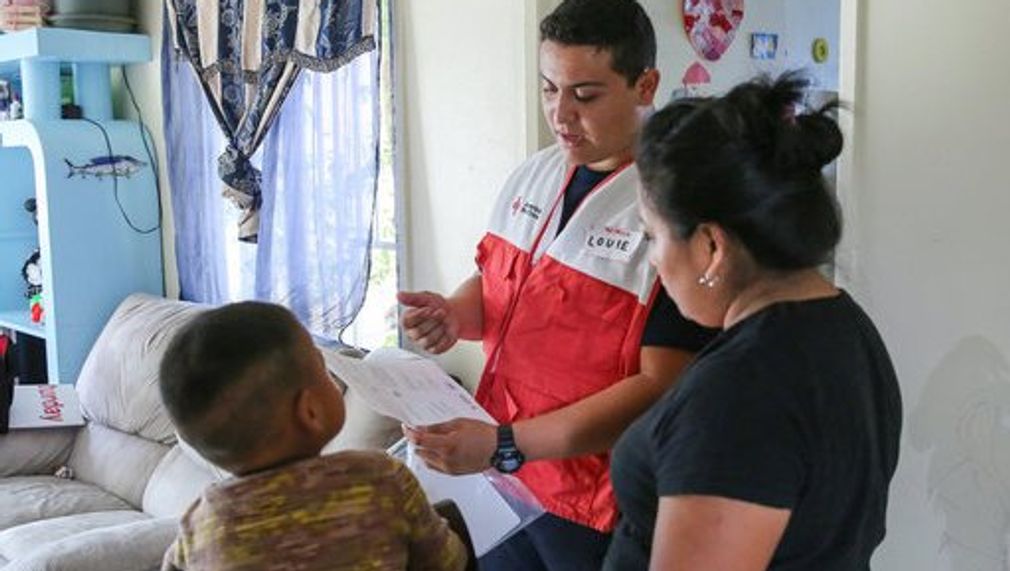Connected Communities – Resilient LA!
We will connect LA’s most vulnerable communities on a neighbor-to-neighbor and community-to-community level through the power of volunteerism. New neighborhood networks and community coalitions will coalesce around the issue of preparedness for home fires. These efforts will lead to a more inter-connected LA with more resilient and prepared individuals and communities, for any type of disaster large or small, especially in vulnerable, low-income communities.

In what areas of Los Angeles will you be directly working?
Central LA
East LA
San Gabriel Valley
San Fernando Valley
South LA
Westside
South Bay
Antelope Valley
City of Los Angeles
How do you plan to use these resources to make change?
Engage residents and stakeholders
Expand a pilot or a program
How will your proposal improve the following CONNECT metrics?
Rates of volunteerism
Adults getting sufficient social & emotional support
Participation in neighborhood councils
Percentage of Angelenos that volunteer informally (Dream Metric)
Describe in greater detail how you will make LA the best place to CONNECT.
Knowing your neighbors and being engaged in your community creates the social connectedness we all need to live productive, healthy and fulfilled lives. This belonging and the active participation in civic life are important values in and of themselves. But what happens when disaster strikes? In particular, what happens if you are poor, without insurance or financial security and live in a vulnerable area? Then the lack of community and belonging as well as financial means can spell complete devastation. When your apartment burns down, you want to know your neighbors, be part of a larger community network and prepared to respond and then recover after the smoke clears. The effects of disasters large and small are exponentially worse for poorer communities. Families struggling to pay rent are less likely to store resources, own a car and have a safe space to stay in an emergency. At the same time, low-income communities are much more likely to be struck by disaster in the first place, considering housing conditions, including construction quality, heating and electrical wiring, is often not up to standard. ARCLA is acutely aware of these disparities as the vast majority of fires we respond to are in vulnerable neighborhoods where underserved residents (most of our disaster relief clients) find themselves in an extremely precarious position after a residential fire, often teetering on the precipice of homelessness and abject poverty.
In response, the Red Cross developed a unique campaign to prevent home fires and increase community resilience with a focus on low-income areas most vulnerable to disaster. We commissioned a study to rank each of LA’s communities according to disaster vulnerability. Those ranking highest are the focus of this initiative. Striving for increased community resilience, the program is based on working with coalitions of community stakeholders to install smoke alarms and provide fire and disaster safety education through home visits. Neighbor-to-neighbor, community-to-community, a coalition of volunteers, staff and our community partners will work together within vulnerable communities across LA to strengthen resilience and save lives.
Overall, the project will forge real interconnectedness and community resilience from the ground up through the power of volunteerism, while working to ensure that a resilient LA continues to be a place for all to connect, learn, create, play and live in, even after disaster, inevitably, strikes.
Please explain how you will evaluate your work.
We will employ several formative and summative tools throughout the initiative’s duration. Quantitative and qualitative data will be compiled quarterly with a comprehensive report produced bi-annually. Progress will be monitored by a staff committee monthly and a Board committee quarterly.
Major outcomes include:
Implement a coalition-driven preparedness effort based on home fire preparedness and installing 2,500 smoke alarms in each of the 5 targeted communities (Van Nuys, El Monte, Koreatown, Paramount and East LA), reaching 20,000 residents.
Measurable outputs to be tracked include:
-Number of households canvassed
-Number of home visits
-Number of smoke alarms installed
-Number of smoke alarm battery replacements conducted
-Number of households trained in smoke alarm testing and maintenance
-Community-based coalitions: Collaborate with at least 15 new partners
-Conduct follow-up every 6 months to provide additional support as residents implement their preparedness plans
How can the LA2050 community and other stakeholders help your proposal succeed
Money (financial capital)
Volunteers/staff (human capital)
Publicity/awareness (social capital)
Community outreach
Network/relationship support